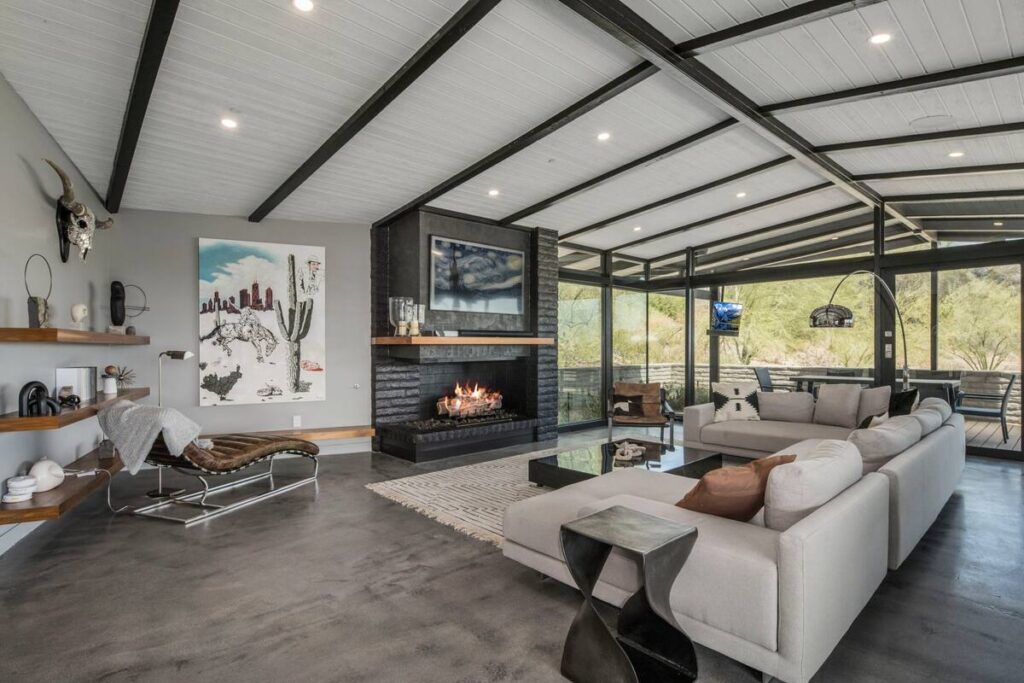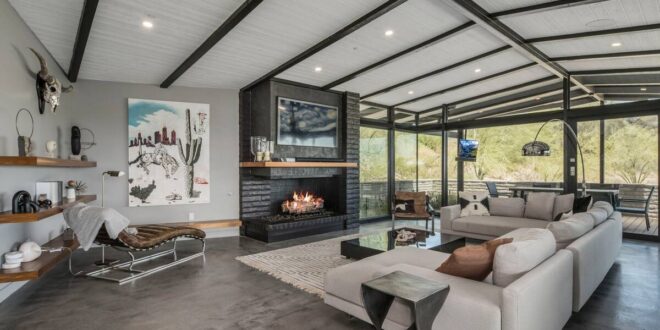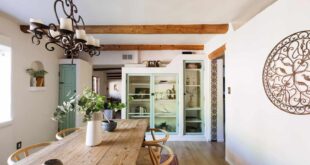
Mid-Century Modern: A Timeless Design Movement
Mid-century modern design, a style that emerged after World War II and flourished roughly from the mid-1940s to the mid-1960s, continues to captivate and inspire designers and homeowners alike. This enduring appeal lies in its clean lines, organic forms, and emphasis on functionality. The mid-century modern aesthetic represents a departure from the ornate styles of previous eras, embracing instead simplicity, practicality, and a connection to nature. Understanding the core principles of mid-century modern is key to appreciating its lasting impact on architecture, furniture, and interior design. In this article, we’ll explore the defining characteristics, key figures, and enduring legacy of this iconic design movement.
The Origins of Mid-Century Modern
The roots of mid-century modern can be traced back to the Bauhaus movement in Germany, which emphasized functional design and the integration of art, craft, and technology. The Bauhaus school, however, was shut down by the Nazi regime in 1933, prompting many of its leading figures to emigrate to the United States. These émigrés, including Walter Gropius and Ludwig Mies van der Rohe, brought with them the Bauhaus philosophy, which profoundly influenced American design. The post-war economic boom and advancements in manufacturing techniques also played a crucial role in the rise of mid-century modern. New materials like plywood, fiberglass, and plastic allowed designers to experiment with innovative forms and create affordable, mass-produced furniture.
Key Characteristics of Mid-Century Modern Design
Several defining characteristics distinguish mid-century modern design from other styles:
- Clean Lines and Minimalism: Mid-century modern furniture and architecture typically feature clean lines, simple shapes, and a lack of ornamentation. The focus is on functionality and form.
- Organic Forms: While emphasizing simplicity, mid-century modern also embraces organic forms and curves, often inspired by nature. Think of the iconic Eames molded plywood chair.
- Emphasis on Functionality: Mid-century modern design prioritizes functionality above all else. Furniture is designed to be comfortable, practical, and easy to use.
- Integration with Nature: Mid-century modern architecture often incorporates large windows and open floor plans to connect the interior with the surrounding landscape. Natural materials like wood and stone are also commonly used.
- Use of New Materials: Designers embraced new materials like plywood, fiberglass, plastic, and aluminum, which allowed for innovative forms and mass production.
- Bold Colors and Geometric Patterns: While neutral colors are often used as a base, mid-century modern design also incorporates pops of bold colors and geometric patterns to add visual interest.
Iconic Figures in Mid-Century Modern Design
Several key figures shaped the mid-century modern movement. These designers and architects left an indelible mark on the world of design:
- Charles and Ray Eames: Known for their iconic molded plywood chairs, Eameses were pioneers in using new materials and techniques to create affordable and stylish furniture.
- George Nelson: Nelson was a prolific designer who created a wide range of products, including the Marshmallow sofa, the Ball clock, and the Coconut chair.
- Eero Saarinen: Saarinen was an architect and designer known for his organic forms and innovative use of materials. His most famous designs include the Tulip chair and the TWA Flight Center at JFK Airport.
- Ludwig Mies van der Rohe: A leading figure in the Bauhaus movement, Mies van der Rohe was known for his minimalist architecture and his famous dictum, “Less is more.”
- Richard Neutra: Neutra was an architect known for his modernist houses that emphasized a connection to nature.
Mid-Century Modern Architecture
Mid-century modern architecture is characterized by its clean lines, open floor plans, and large windows. Houses are often designed to blend seamlessly with the surrounding landscape. Common features include:
- Ranch-style homes: Single-story homes with low-pitched roofs and large windows.
- Split-level homes: Homes with multiple levels connected by short flights of stairs.
- A-frame homes: Homes with a triangular shape and a steeply pitched roof.
- Flat roofs: Many mid-century modern homes feature flat or slightly sloping roofs.
- Large windows: Large windows are used to bring natural light into the interior and connect the home with the outdoors.
Notable examples of mid-century modern architecture include the Farnsworth House by Mies van der Rohe and Case Study Houses in Southern California.
Mid-Century Modern Furniture
Mid-century modern furniture is known for its clean lines, simple shapes, and emphasis on functionality. Common materials include wood, plywood, fiberglass, and metal. Iconic pieces include:
- Eames Lounge Chair and Ottoman: A classic example of mid-century modern design, this chair is known for its comfort and iconic silhouette.
- Tulip Chair: Designed by Eero Saarinen, the Tulip chair is a sleek and minimalist chair with a single pedestal base.
- Womb Chair: Designed by Eero Saarinen, the Womb chair is a comfortable and supportive chair designed for relaxation.
- Barcelona Chair: Designed by Ludwig Mies van der Rohe, the Barcelona chair is a minimalist and elegant chair with a chrome frame and leather cushions.
- Noguchi Table: Designed by Isamu Noguchi, the Noguchi table is a sculptural coffee table with a glass top and a wood base.
The Enduring Appeal of Mid-Century Modern
Despite its origins in the post-war era, mid-century modern design continues to be popular today. Its timeless appeal lies in its:
- Simplicity: The clean lines and minimalist aesthetic of mid-century modern design create a sense of calm and order.
- Functionality: Mid-century modern furniture is designed to be comfortable and practical, making it ideal for everyday living.
- Versatility: Mid-century modern design can be easily integrated into a variety of interior styles, from traditional to contemporary.
- Timelessness: The classic designs of the mid-century modern era continue to be relevant and stylish today.
The mid-century modern aesthetic has seen a resurgence in recent years, with many homeowners and designers embracing its clean lines, organic forms, and emphasis on functionality. Whether you’re looking to furnish an entire home or simply add a few key pieces, mid-century modern design offers a timeless and versatile style that can enhance any space. [See also: Tips for Decorating a Mid-Century Modern Living Room]
Incorporating Mid-Century Modern into Your Home
If you’re interested in incorporating mid-century modern design into your home, here are a few tips:
- Start with key pieces: Invest in a few iconic mid-century modern furniture pieces, such as an Eames chair or a Noguchi table.
- Use a neutral color palette: Use neutral colors like white, gray, and beige as a base, and add pops of color with accessories and artwork.
- Incorporate natural materials: Use natural materials like wood, stone, and leather to add warmth and texture to your space.
- Add geometric patterns: Use geometric patterns in rugs, pillows, and wallpaper to add visual interest.
- Don’t be afraid to mix and match: Mid-century modern design can be easily combined with other styles, so don’t be afraid to experiment.
The Future of Mid-Century Modern
The enduring popularity of mid-century modern suggests that it will continue to influence design for years to come. As people increasingly seek out simple, functional, and stylish designs, the mid-century modern aesthetic is likely to remain a relevant and inspiring source of inspiration. Its emphasis on sustainability and connection to nature also aligns with contemporary values, making it a design movement that is both timeless and forward-looking. [See also: The Evolution of Modern Interior Design]
In conclusion, mid-century modern is more than just a design style; it’s a philosophy that emphasizes simplicity, functionality, and a connection to nature. Its enduring appeal lies in its ability to create spaces that are both beautiful and livable. Whether you’re a design enthusiast or simply looking to update your home, mid-century modern offers a timeless and versatile style that can enhance any space.
 Nimila
Nimila




